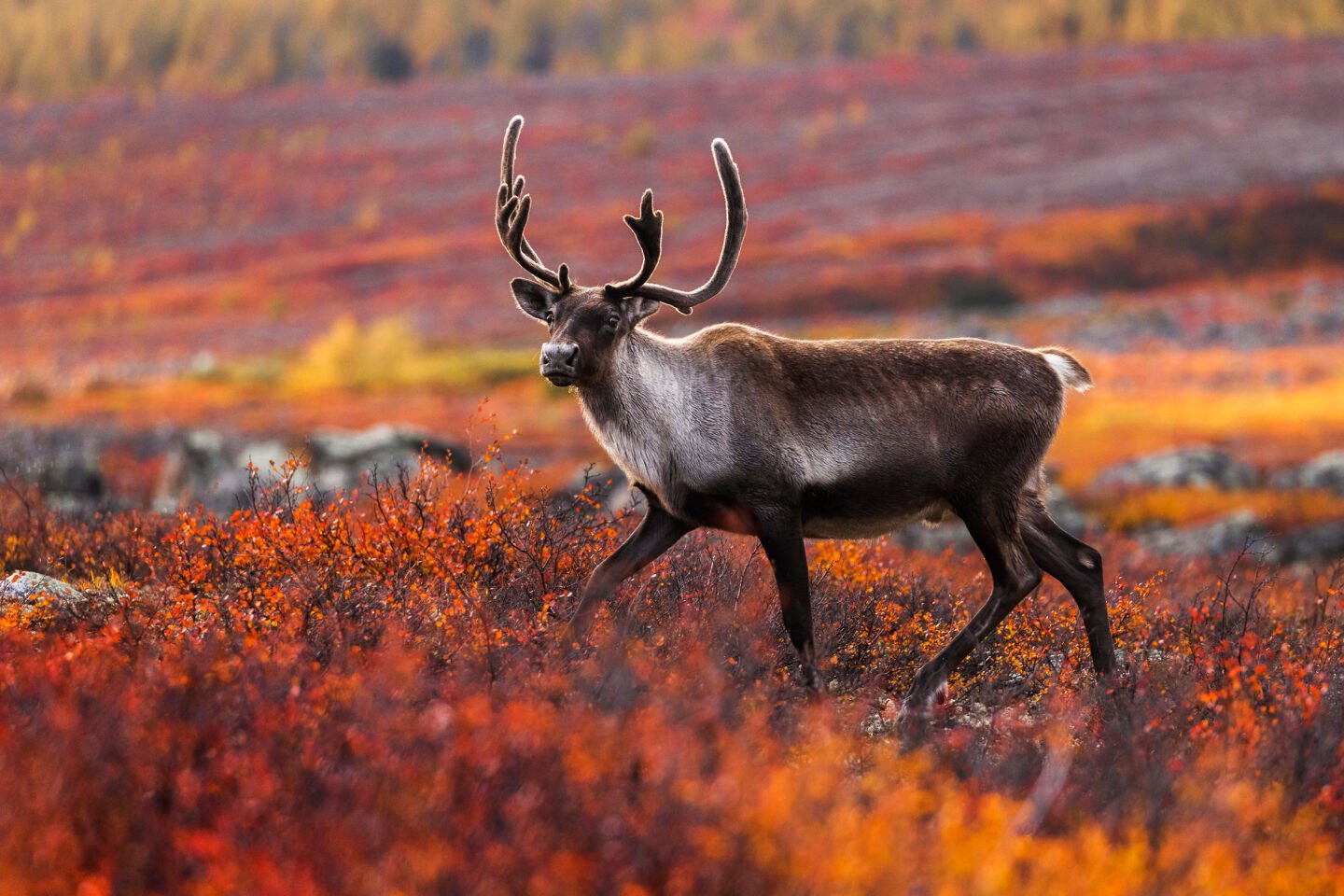Caribou are highly migratory animals that stay together in herds while they move almost constantly.
Fast Facts
Common name: Caribou
Scientific name: Rangifer tarandus
Type: Mammal
Diet: Herbivore
Group name: Herd
Weight: 109 to 318 kilograms
Length: 1.6 to 2.1 metres
COSEWIC Status: Threatened
Did you know?
Caribou have scent glands at the base of their ankles. When they sense danger, they will rear up on their hind legs to release a scent that alerts the other caribou.
Physical characteristics and behaviour
There are several subspecies of caribou. The largest is the woodland caribou, found in the boreal forest across Canada. “Reindeer” is the name given to woodland caribou in Scandinavia and Russia, but reindeer and woodland caribou are actually the same species, rangifer tarandus.
The woodland caribou has a short, stocky body that conserves heat, while its long legs help it move through the deep snow. Its winter coat provides insulation from the cold, and its muzzle and tail are short and covered in hair.
A caribou hooves are large and hollow in the centre, making them handy tools for digging in the winter snow to scoop up lichen, an important food source.
The caribou is the only member of the deer family where both males and females grow antlers. The antlers of the female are smaller than those of the male, but they are carried for a longer period of time. Male caribou shed their antlers in November or December, after mating. Females will often carry theirs until June after they have given birth, to help them defend food sources while nursing their calves.
Diet
Woodland caribou eat tree and ground lichen in the winter and graze on a variety of grasses, sedges, shrubs and plants during the summer. They favour secluded areas and mature forests.
Habitat and distribution
Caribou live all across Canada’s boreal region and are present in all the provinces and territories, except Nova Scotia, New Brunswick and Prince Edward Island. Even with such a large range, these animals are in danger. Recent studies show that of the 51 herds that live in Canada, at least 20 are in decline. Not a single one is growing.
Subspecies
- woodland caribou
- Peary caribou
- barren-ground caribou
- boreal caribou
- Southern mountain caribou
- mountain caribou





